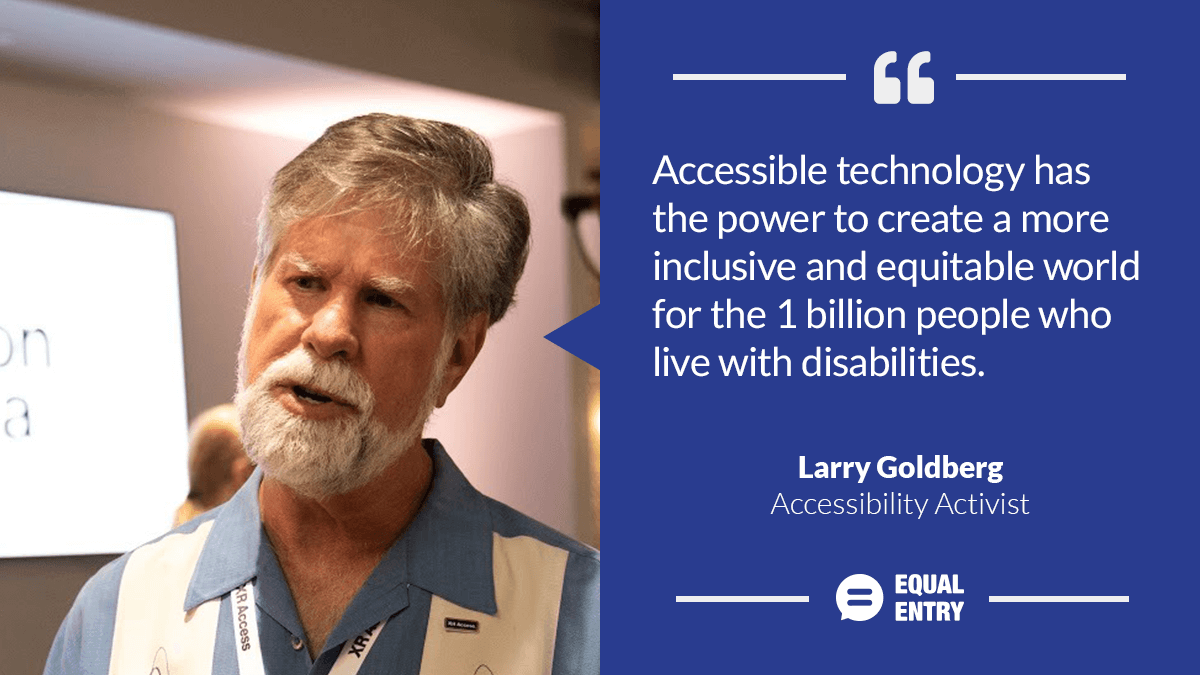Summary

Larry Goldberg leads Accessibility at Verizon Media. In 1990, he founded and directed the WGBH National Center for Accessible Media, an R&D center for new media policy, standards and innovation. Prior to that, he directed WGBH’s Media Access Group, the world’s first caption and audio description production unit.
How did you get your start in accessibility?
In 1990, I founded and directed the WGBH National Center for Accessible Media, an R&D center for new media policy, standards and innovation. Prior to that, I directed WGBH’s Media Access Group, the world’s first caption and audio description production unit. I joined Verizon Media (then Yahoo) in 2014 to direct the company’s initial media accessibility efforts, including captioning of all live and on-demand video programming. Named overall Head of Accessibility in 2019, I now oversee all of the company’s product accessibility activities as well as its internal and external marketing and information dissemination work.
I founded and now serve on the Executive Committee of Teach Access and recently developed the XR Access industry initiative for assuring the accessibility of next-generation virtual and augmented reality platforms. I was a pioneer in the development of the emerging captioning system for digital television in the U.S. and I’m a nationally recognized expert in accessibility solutions for people with disabilities. I was awarded a patent in 1996 for “Rear Window™,” the first closed-captioning system for movie theaters and theme parks.
I chaired the Federal Access Board’s TEITAC Audio/Video subcommittee, drafting recommendations for updates of section 508 standard, and I briefed Congressional and regulatory committees on access barriers and opportunities within new media. I testified as an expert witness at hearings before the Subcommittee on Telecommunications and the Internet on the “21st Century Communications and Video Accessibility Act (CVAA),” which was passed by Congress in 2010. I then co-chaired the FCC committee which wrote the subsequent CVAA regulation.
As Head of Accessibility at Verizon Media, you have been instrumental in launching the XR Access platform. What is XR Access and what does it hope to achieve?
Virtual, augmented, and mixed reality technologies (XR) are on the cusp of becoming mainstream. These technologies have the potential to radically impact the lives of all people – old, young, rich, poor, people of color, people with disabilities, and more.
In order to ensure this future technology is inclusive and accessible, Verizon Media and Cornell Tech launched the XR Access platform and hosted the first summit on XR accessibility in July of 2019 on Roosevelt Island, NYC. We brought together more than 120 leaders from industry, government, academia, learning environments and diverse user communities for a day of talks, technology demonstrations, and working sessions focused on creating actionable plans to solve the unique accessibility challenges posed by XR. Now an ongoing initiative, with six Working Groups convened and being led by XR Access Initiative members to investigate and promote solutions.

What’s next? The Symposium organizers have summarized and posted the results of the 2019 Symposium which are guiding the efforts of the Working Groups. Planning for the 2nd Annual XR Access Symposium is moving forward now, as well as a virtual conference to be convened on July 20-21, 2020.
Heartfelt thanks go to each of the incredible participants who, like Verizon, are committed to delivering the promise of the digital world–to everyone.
What is an accessibility barrier you would like to see solved?
Accessible technology has the power to create a more inclusive and equitable world for the 1 billion people who live with disabilities, however most students do not learn about accessibility in school. This has created an accessibility skills gap. In fact, 60% of companies say it is difficult or very difficult to find candidates with the accessibility skills needed.
We set out to tackle this significant accessibility skills gap by co-founding Teach Access, a groundbreaking partnership of top tech companies, major universities, and leading advocacy organizations with a mission to infuse accessibility concepts and skills into higher education curriculum.
Teach Access’ focus is on systemic change, with the understanding that no single entity or sector can alone make the necessary progress at the scale required. Together, we empower students studying design, computer science, and human-computer interaction with the knowledge necessary to create a more inclusive and accessible world.